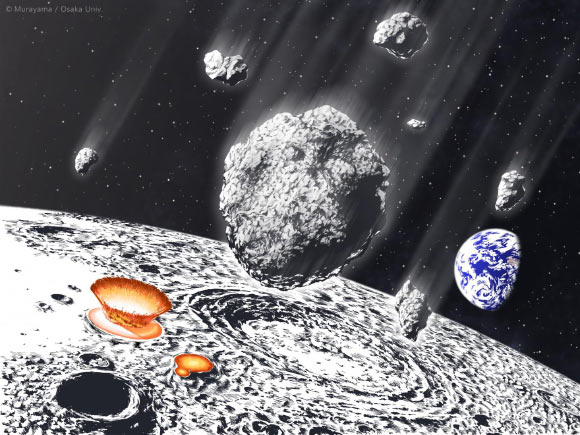Is it Possible for Comets to Transport Life’s Building Blocks to Rocky Exoplanets?
In a paper published in the Proceedings of the Royal Society A: Mathematical Physical and Engineering Sciences, scientists from the University of Cambridge delved into the potential of cometary impacts to transport the essential prebiotic molecules crucial for the emergence of life on rocky exoplanets. Their findings indicate that for the successful delivery of prebiotic molecules, comets must maintain relatively modest speeds—below 15 km per second. Beyond this threshold, the impact’s velocity and temperature would lead to the disintegration of the molecules. The optimal scenario for achieving the necessary impact velocity appears to be within compact planetary systems, where a cluster of planets closely orbits one another. In such systems, a comet could undergo a kind of planetary relay, being passed or ‘bounced’ from one planet’s orbit to another, effectively slowing down its speed.

Comets are recognized repositories of essential life-building blocks, referred to as prebiotic molecules. For instance, an examination of samples from the Ryugu asteroid in 2022 revealed intact amino acids and vitamin B3. Comets also harbor substantial amounts of hydrogen cyanide, a crucial prebiotic molecule characterized by robust carbon-nitrogen bonds, making it resilient to high temperatures and potentially enabling survival during atmospheric entry.
Dr. Richard Anslow, a researcher from the Institute of Astronomy at the University of Cambridge, expressed the motivation behind investigating the potential of comets in delivering complex molecules to exoplanets. Considering Earth as the sole life-supporting planet known, the researchers aimed to discern the types of comets and their speeds that could effectively transport intact prebiotic molecules.
Most comets in our Solar System reside in the Kuiper Belt, situated beyond Neptune’s orbit. When these comets or other Kuiper Belt objects collide, Neptune’s gravity can propel them toward the Sun, eventually being drawn in by Jupiter’s gravitational pull. Some comets from this process navigate past the asteroid belt and reach the inner Solar System.
The researchers, employing various mathematical modeling techniques, concluded that comets could transport precursor molecules for life under specific conditions. For planets orbiting a star akin to our Sun, low mass is advantageous, and close proximity to other planets in the system enhances the likelihood of successful delivery. In systems with lower-mass stars, where speeds are higher, nearby planets on close orbits play a more critical role in facilitating comet interactions.
In tightly-packed planetary systems, the gravitational influence of one planet can pull in a comet, and through successive passes with other planets, the comet gradually decelerates, allowing some prebiotic molecules to endure atmospheric entry. This ‘comet-passing’ mechanism could potentially explain the presence of prebiotic molecules on planets.
However, for planets orbiting lower-mass stars, such as M-dwarfs, the delivery of complex molecules by comets becomes more challenging, particularly if the planets are loosely arranged. Rocky planets in these systems also experience more high-velocity impacts, potentially presenting unique challenges for potential life.
The implications of these findings extend to the search for life beyond our Solar System, providing insights into the types of systems worth investigating. Dr. Anslow expressed excitement about combining advancements in astronomy and chemistry to explore fundamental questions about the origins of life and the molecular pathways that may exist on other planets.
Do not forget to share your opinion with us to provide you with the best posts !



0 Comments